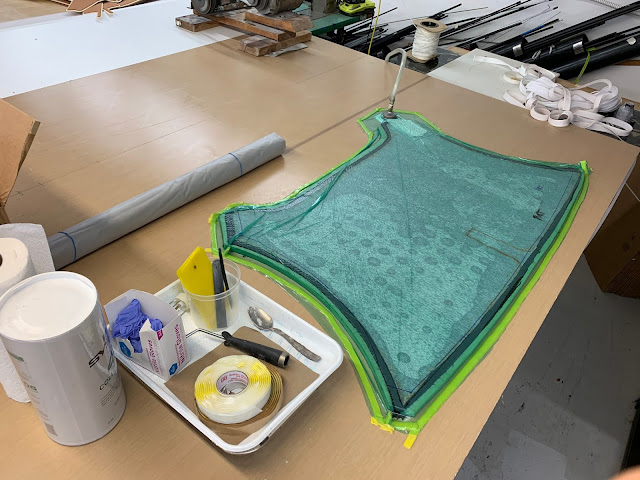Traveller Bulkhead
The Melges 30 was built without much in the way of stiffeners. The original design was clever in its simplicity, and a lot of structure seemed to be derived from the companionway and engine box plugging directly into the aft end of the keel trunk. Rewinding the tape, one might recall that I chopped everything out of the boat, and with the longer doghouse, I've needed to take meaningful steps to make sure I have enough strength and structure.
Without knees at the hull to deck joint, and only a center spine bulkhead, I couldn't seem to shake the idea that the cockpit pan wasn't really supported against parallelograming to leeward. To combat that phenomenon, and to give the traveller something to pull against, I decided on making a stiff, transverse bulkhead, just aft of the new propane locker. It should be noted that one of the original seeds for this concept was a similar strengthening element found on the Melges 30, Ballistic.
Here's a look at the part being vacuumed on the flat table at work. I perforated the core with the CNC machine and a 1/16" drill bit, allowing air and excess resin an avenue to escape. I put a lot of 45 degree fiber on this panel as I really want it to act as a lateral shear web. This was the first time that I put peel ply on the bottom of the layup stack, as well as the top. I did note that the bottom side of the panel seemed to hold a bit more resin with the peel ply down there, so it's not a magic bullet, but a reasonable tradeoff/shortcut.













Comments